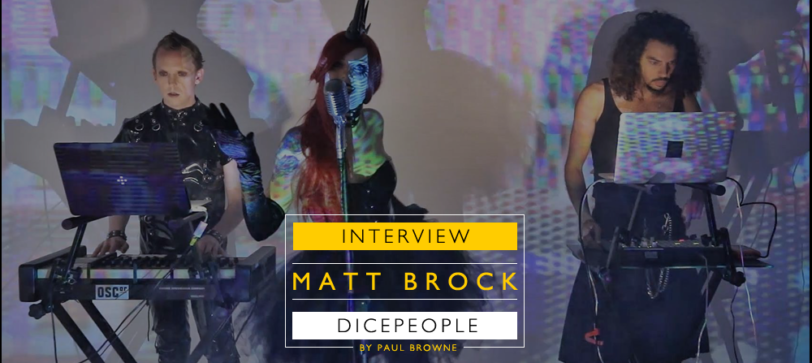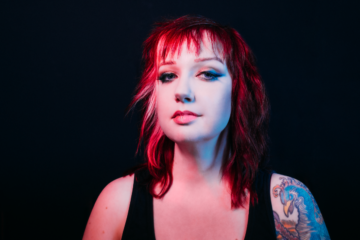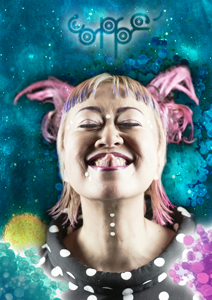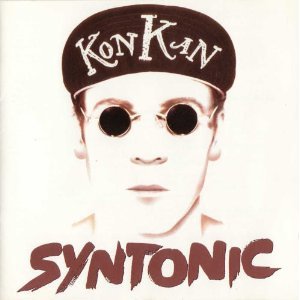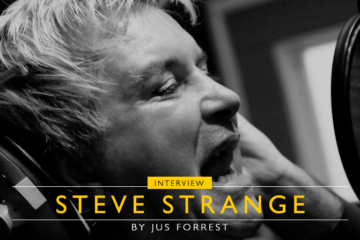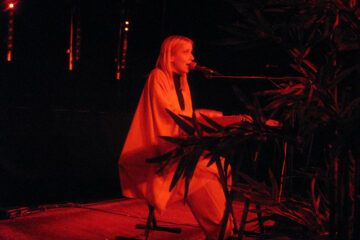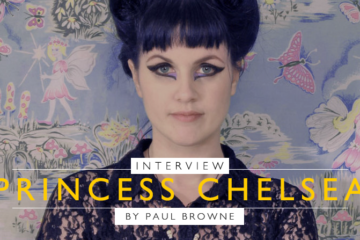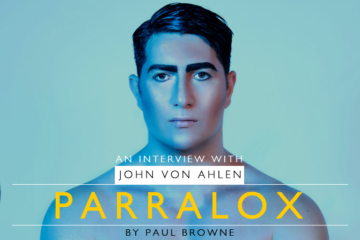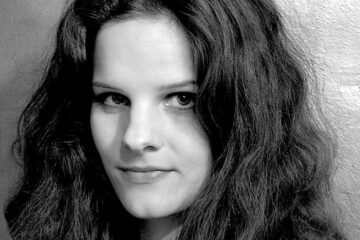Delving into the darkwave secrets of one of London’s electropop delights…
The release of their Synthetic EP caught our ears recently, but DICEPEOPLE have been putting out their own brand of dark electronic pop since 2013. Consisting of Matt Brock (musician, songwriter and producer), Atashi Tada (vocalist) and Rafael Filomeno (visual artist), the outfit have also dazzled audiences with their compelling live performances.
Dicepeople have a special gig in London coming up this month when they perform at Electrowerkz alongside Das Fluff and Healthy Junkies. Matt Brock kindly took time out to chat to The Electricity Club about the inspirations behind Dicepeople’s concept and also about their particular approach to live performances…
There’s a cinematic quality to much of your music and you cite the likes of David Lynch and David Cronenberg as influences. Are there any films in particular which sum up the ethos of Dicepeople for you?
I’m often told that Dicepeople music feels like the soundtrack to something, and indeed I aim to create an intense filmic atmosphere in our songs. Rafael (our visual artist) and I are heavily influenced by cinema for our sounds, visuals and concepts. Lynch’s Lost Highway is a fantastic example of a film fusing strong imagery with sound and music to create an extremely immersive experience. Cronenberg’s Videodrome is another huge influence for us with its exploration of very dark themes involving control, voyeurism and the nature of reality as shown via layers of screens (a recurring theme in Dicepeople).
How important are the visual aspects of your shows?
Visual projections tend to be an “add on” for many bands, and often that works well and there’s nothing wrong with that, but for Dicepeople the visual aspects are a core part of what we do. We rarely do a performance without the visuals, and for our live shows just as much planning goes into the visuals as the music. We aim to bring together a true audiovisual show featuring synchronised music and images, with us as mysterious characters onstage summoning up the immersive music and images through the smoke and darkness. We also like to dress onstage in various interesting ways to further enhance the experience and put on the best show we can for the audience.
Are there significant technical challenges in prepping for performances?
Incorporating the visual aspects definitely makes things a lot more complex, as we need to figure out what kind of imagery to fit with the music and how best to sync the two together. In addition to the regular rehearsals which most bands require, we also need a significant amount of time to work through the technical aspects and test that it all works together as intended. It adds many variables to the live environment, which are also highly dependent on the location since each venue is different, so getting everything set up for our live performances can be quite challenging. Many venues provide screens and projectors we can use, but quite a few don’t, so in those situations we need to factor in setting up our own screens and projector. It’s good to have these challenges, and we always learn something new each time.
What sort of gear setup does the band employ for live shows?
BUY NOW
For a while on the musical side I broke down each song into individual clips onto twelve tracks in Ableton, then I used Launchpad controllers to basically control the entire arrangement in real time, which allowed us to restructure each song on the fly. It was a very interesting way of doing things, but I ended up missing the performance side so now I use a controller keyboard to play musical parts and trigger samples.
Before a gig I spend quite a bit of time creating the backing tracks specially, which are often quite different to the original versions of the songs. These backing tracks are triggered in Ableton along with MIDI sequences and the live keyboard parts, which in turn I can process in different ways using my controller keyboard. Rafael uses Resolume with a MIDI controller on the video side, with his laptop connected to the projector. We generally set up an ethernet network onstage so we can transmit MIDI data back and forth to synchronise audio and video parts.
I also program the sequences for our stage lights in Ableton which are converted into DMX data using various plugins and sent over ethernet to the DMX controller to trigger the lights as needed. When Atashi Tada is performing vocals with us, she uses her own microphone and multi-effects box, so her side of things is relatively straightforward.

What are your immediate plans for the future of Dicepeople?
We’re trying out a new visual concept at our Electrowerkz show on the 22nd. I won’t give away what it is, but we’ve been posting some clues on our Facebook page! We’re working hard on that now and I hope it’ll be a really interesting performance which the audience will love. We’ll be looking to incorporate some of these ideas into future performances.
There are discussions in the works for future shows involving some other really great artists, and we’re working on a new album which will hopefully be out later this year. We’ve also recorded a cover of a Depeche Mode track for an upcoming compilation of Mute Records cover versions. It’s been a very busy year so far with the release of the Synthetic EP and video, plus various London gigs, and there doesn’t seem to be any sign of things slowing down!
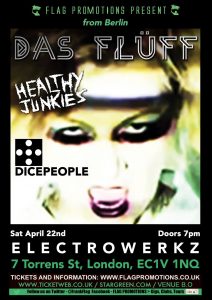
Dicepeople will be performing live at Electrowerkz on Saturday 22nd April alongside Das Fluff and Healthy Junkies.
Tickets available via http://www.ticketweb.co.uk/event/272919
https://dicepeople.bandcamp.com/track/synthetic
http://www.facebook.com/dicepeople


